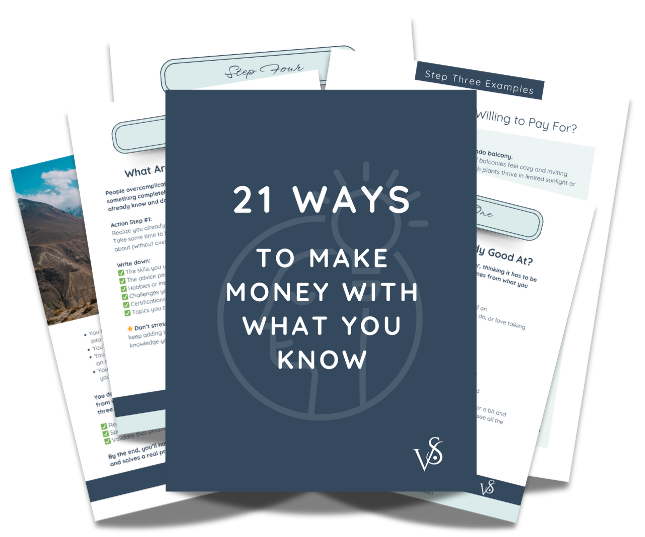Online Course Creator Tips!
Jan 29, 2022
Tip #1 Understand that nobody wants your online course.
It sounds harsh, but the truth is that nobody wants to buy an online course. What they’re looking for is a transformation. If your course helps people lose weight, do you think they would choose:
- lose 10 pounds in 10 weeks with my special The Lisa Way method
- learn how to lose weight by taking my course
The fact that you have ten hours of video in your course is not something your potential student wants to hear. What they want to know is whether or not you can provide a transformation for them. They want to know if you can help them lose ten pounds. You’re not selling ten hours of video, you’re selling your method of helping them lose ten pounds.
In summary, they want the end result, not your course so emphasizing your course on the sales page doesn’t help sell it. The emphasis should be on how great they’ll feel after the transformation, what becomes possible for them following the transformation, etc. Your course is “designed” to get them this transformation.
Tip #2 Design your course or membership using a success path.
Draw a circle on the left side of your paper then a second circle on the right side. This is your student’s before and after.
- On the left, you’ll describe where they’re at right now – what they’re feeling right now, what they’ve tried up to this point, what they don’t want in their life anymore that’s going to kickstart them into action, how much knowledge they have about their subject right now.
- On the right side, you’ll describe where they want to be – how they’ll feel now that they’re here and what becomes possible now that they’ve arrived.
This is your student’s success path. You want to move them from point A to point B. In between are your course modules. These are the steps they will take to move from point A to point B. Missing just one of these steps will throw them off track. Anything outside this success path could be a bonus to the course.
Tip #3 Educate your audience on the vehicle that will lead them to their transformation.
Your audience wants the transformation you’re offering, but they also want to know HOW you’re going to help them get there. A course doesn’t actually provide the transformation, the vehicle your course is offering is what will help them get there. For example:
- The transformation is losing ten pounds and the vehicle is consistent 30-minute a day workouts.
- The transformation is starting a personal chef business and the vehicle is learning marketing foundations.
- The transformation is what they want to achieve and the vehicle is HOW you’ll help them achieve it.
Tip #4 Price anchor your product to show the VALUE of your offer.
If you don’t provide a price comparison when presenting your offer, your audience won’t see the value of it and will not likely purchase. A response of “I don’t have the money” often means “I don’t see the value.” Think about alternative solutions to the transformation you’re promising, then present it as your price anchor. For example:
- Hiring a personal trainer will cost you about $50 for a 30-minute session. Today, you’ll receive 50 workout sessions for just $250 and can perform the workouts at your own pace.
- Implementing these 10 steps to build a personal chef business will bring in $150 to $400 a cook session for one client and these cook sessions are weekly. You would think that a course showing you how to do this would cost thousands but today, it’s just a one-time payment of $497.
Tip #5 Protect yourself from misuse of your course.
A website should always have a terms and conditions plus a privacy policy. The privacy policy is legally required when collecting names and emails on the internet. The website terms and conditions outlines the policies of your website and protects you.
The most often forgotten footer, however, is the course terms. The course terms outlines what the purchaser can and can’t do with your course materials. They can’t resell them, publicly display them on the internet, or use them in any other way outlined in your course terms. The terms also outline your refund policy and what happens if they don’t make their payment plan on time. Without a course terms on your website, you’re setting yourself up for being taken advantage. Here’s a link to free privacy policy and other legal forms that should be on your website (these are paid forms).
What would you like to learn next?
